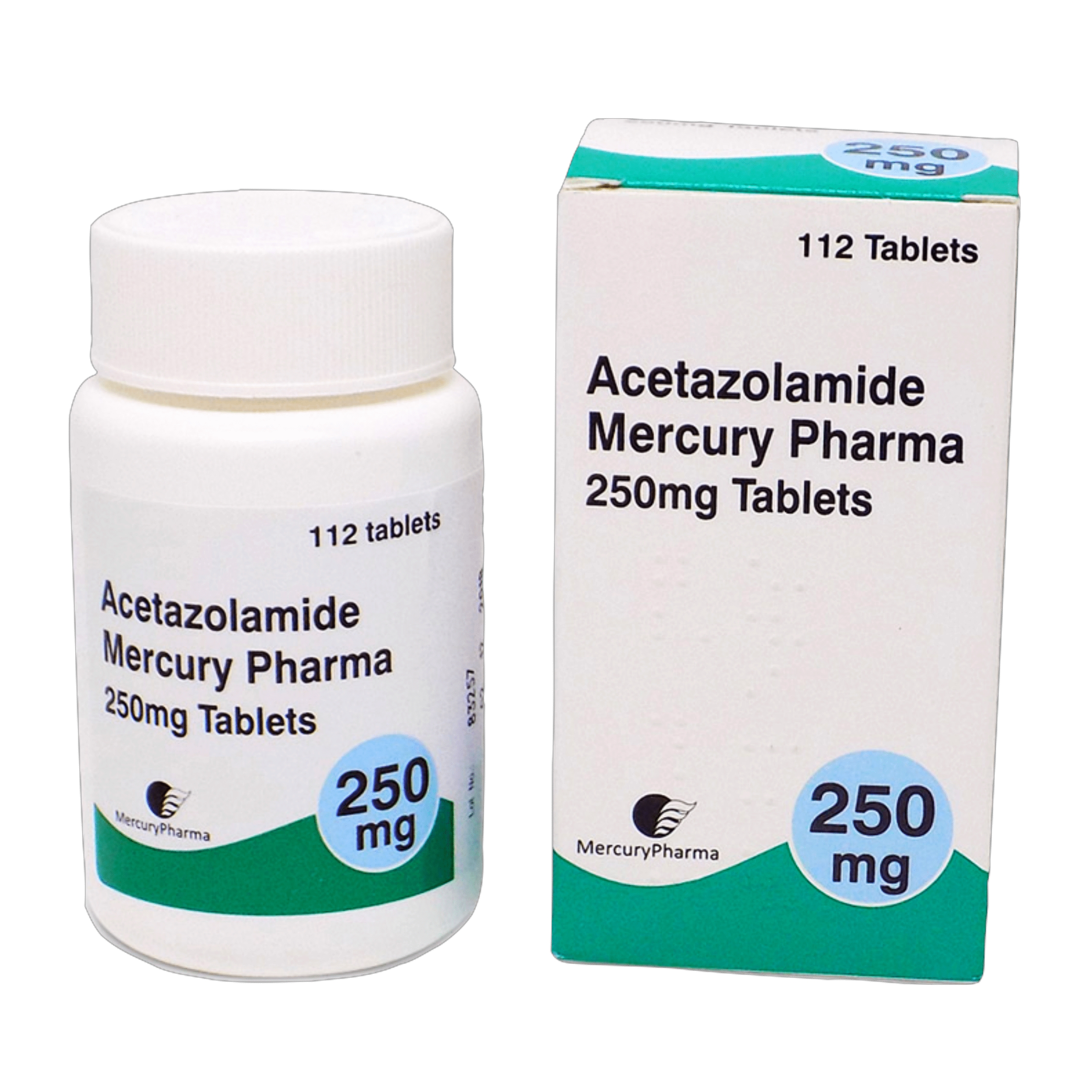What Are Acetazolamide Tablets?
Acetazolamide 250 mg is a prescription tablet used to manage several health conditions. It belongs to a group of medicines known as carbonic anhydrase inhibitors. As a result, it reduces fluid production in the body, supporting better pressure control and fluid balance. Therefore, acetazolamide tablets are commonly used to treat glaucoma, altitude sickness, certain types of oedema, and as a supporting treatment for epilepsy.
What Are Acetazolamide Tablets Used For?
Doctors may prescribe Acetazolamide for multiple purposes:
— Lowers intraocular pressure in open-angle and secondary glaucoma
— Prevents and relieves symptoms of altitude sickness (e.g. dizziness, breathlessness, headaches)
— Reduces fluid retention (oedema), often linked to heart failure or other causes
— Acts as an add-on therapy for certain types of epilepsy
In each case, the goal is to reduce pressure and promote fluid balance.
How Do Acetazolamide Tablets Work?
Acetazolamide works by blocking an enzyme called carbonic anhydrase. This enzyme helps regulate fluid levels in the eyes, brain, and kidneys. When this enzyme is blocked, it reduces fluid production:
— It lowers pressure inside the eyes
— Helps remove excess fluid from the body
— Supports brain function in epilepsy by altering fluid and electrolyte balance
— Encourages deeper breathing, which helps prevent altitude sickness
Together, these actions help manage a range of fluid-related conditions.
How Should Acetazolamide Be Taken?
Your doctor will advise on the exact dose based on your condition. However, it’s important to follow the general guidance below:
— Swallow 1 tablet (250 mg) with water, as directed by your doctor
— Can be taken with or without food
— Take at regular intervals, usually 1–4 times per day depending on the condition
— Do not stop or change your dose unless advised by a healthcare provider
— For altitude sickness, start 1–2 days before ascent and continue while at altitude
Are There Any Side Effects?
As with any medication, some users may experience side effects. However, these are usually mild and go away with continued use.
Common side effects:
— Tingling in fingers, toes, or face
— Loss of appetite
— Nausea or stomach upset
— Feeling tired or drowsy
Uncommon or rare side effects:
— Changes in taste
— Increased urination
— Hearing disturbances
— Mood changes
Serious side effects (seek medical attention):
— Severe skin rash
— Blood in urine
— Difficulty breathing or swallowing
— Signs of liver or kidney problems
If in doubt, always report side effects that are persistent or worrying to your GP or pharmacist.
Who Should Avoid Acetazolamide?
This treatment may not be right for everyone. Avoid taking Acetazolamide if you:
— Have severe liver or kidney disease
— Are allergic to sulfonamides or any ingredient in the tablets
— Have low levels of sodium or potassium in your blood
— Are pregnant or breastfeeding, unless advised by your doctor
Because of these risks, always consult a healthcare professional before starting a new prescription, especially if you have existing health conditions or take other medications.
How Should Acetazolamide Be Stored?
To keep Acetazolamide effective for longer, it should be stored carefully. However, failing to do so could reduce its potency.
— Store below 25°C in a dry place
— Keep in the original packaging
— Protect from light and moisture
— Keep out of sight and reach of children
— Don’t use after the expiry date—instead, return unused tablets to your pharmacy for safe disposal



